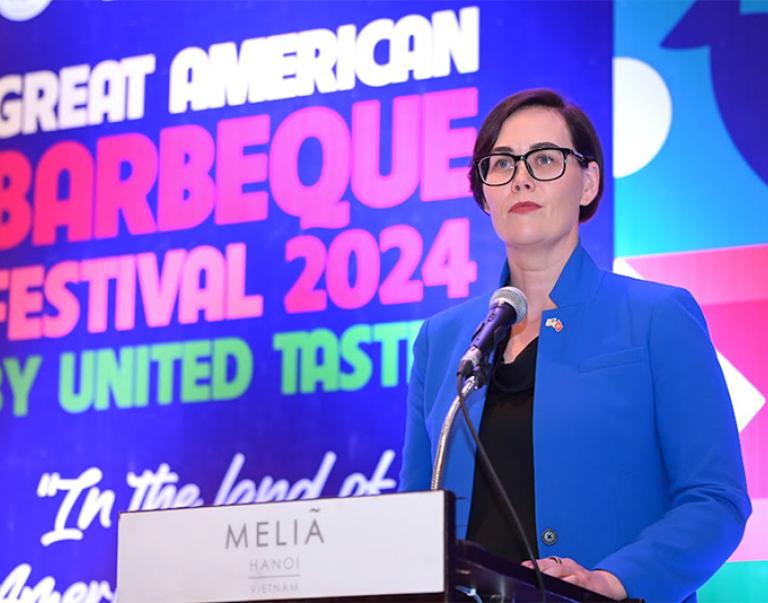WASHINGTON, Sept. 15, 2015 - U.S. Department of Agriculture Secretary Tom Vilsack today announced the award of $20.5 million through its Conservation Innovation Grants (CIG) program for 45 projects that will develop and advance the conservation of natural resources. This year's projects include efforts to increase habitat for pollinators, develop new ways to attract private investment in natural resource conservation, give agricultural producers greater access to greenhouse gas markets, and help farmers and ranchers make their operations more resilient to climate change.
"This year's slate of projects represent the next generation of natural resources conservation, headed by partners who are progressive and forward-thinking in their solutions to natural resource problems," Vilsack said. "Many of them are also engaging with beginning or underserved farmers and ranchers, and carrying their projects into parts of the country where Conservation Innovation Grants have not been utilized in years past."
Seven of the approved grants support conservation technologies and approaches to help beginning, historically underserved or socially disadvantaged farmers and ranchers. Approximately half of this year's funding supports environmental markets projects in three categories: water quality trading, greenhouse gas markets, and—for the first time--impact investments in working lands conservation.
Below is a small sample of this year's awardees and their projects:
- Iowa State University received $760,897 to develop and accelerate the adoption of innovative approaches to monarch butterfly conservation, with focus on developing methods appropriate for use in the agriculturally-intensive Midwestern U.S. corn and soybean production regions.
- Nuestras Raices received $811,148 to provide guidance on environmentally sound growing practices and develop a language and culturally appropriate training program to support the production of Caribbean Latino specialty crops in the Northeast.
- Environmental Defense Fund received $960,000 to create the first large scale pilot project generating greenhouse gas credits from nutrient management practices on corn and almond farms.
- The Farm Foundation received $685,990 to collect, analyze and disseminate site-specific soil health and economic information related to cover crops and no-till to producers interested in adopting these soil health improving practices.
- Indian Land Tenure received $295,000 to adapt greenhouse gas protocols and increase engagement and participation of Indian Tribes in greenhouse gas markets.
- The Nature Conservancy received $498,000 to demonstrate the potential of carbon markets as a viable financial instrument, enrolling 50,000 acres of rangeland in North and South Dakota in a carbon offset program.
- Partners for Western Conservation, including the Colorado Cattlemen's Association and the States of Nevada and Utah, received $279,400 to develop a pay-for-success investment instrument for wildlife habitat and water quality conservation. The State of Nevada will pilot the instrument as part of its efforts to conserve Greater sage-grouse habitat.
A full list of recipients is available here: http://www.nrcs.usda.gov/wps/portal/nrcs/main/national/programs/financial/cig/.
Administered by the Natural Resources Conservation Service, CIG stimulates the development of innovative approaches and technologies for conservation on farms, ranches and forest lands. Funding for CIG comes from the Environmental Quality Incentives Program, part of the 2014 Farm Bill. At least 50 percent of the total cost of CIG projects must come from non-federal matching funds.
NRCS has offered Conservation Innovation Grants since 2004, investing in ways to demonstrate and transfer efficient and environmentally friendly farming and ranching. Grants have helped develop trading markets for water quality and have shown how farmers and ranchers may use fertilizer, water and energy more efficiently. Since 2009 through this year's funding, 368 projects have been awarded for a total $146 million investment in novel conservation. Click here for a summary fact sheet of the first 10 years of CIG.
For more on this grant program, visit USDA's Conservation Innovation Grants webpage.
#
USDA is an equal opportunity provider and employer. To file a complaint of discrimination, write: USDA, Office of the Assistant Secretary for Civil Rights, Office of Adjudication, 1400 Independence Ave., SW, Washington, DC 20250-9410 or call (866) 632-9992 (Toll-free Customer Service), (800) 877-8339 (Local or Federal relay), (866) 377-8642 (Relay voice users).



